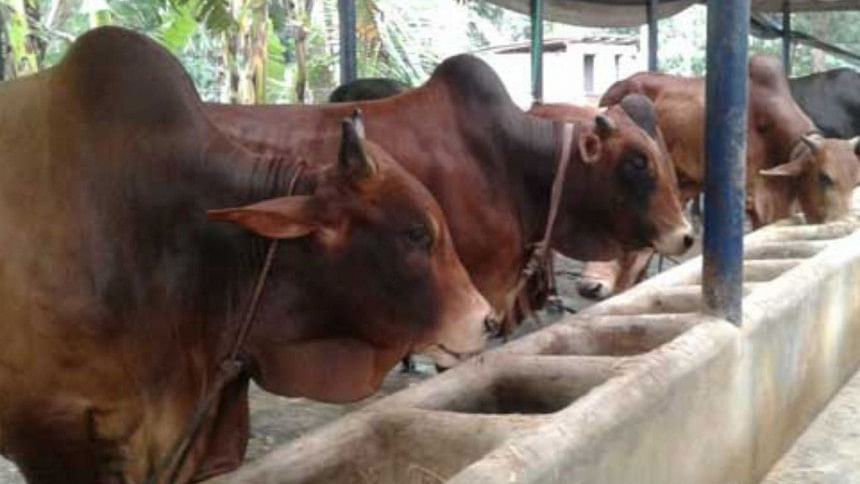Artificial insemination a success

With Eid-ul-Azha around the corner, more than a few thoughts are focused on cattle. In three Bagerhat upazilas, thanks to an ongoing artificial insemination programme being implemented by the livestock department, the cows are looking especially robust.
“In March last year two of my local cows participated in artificial breeding at the livestock office,” says farmer Mithun Sheik from Gotapara village in Bagerhat Sadar. “They each gave birth to male calves, and those calves have grown twice as fast!”
“After artificial breeding my cow gave birth to a female calf,” says Sanat Kumar, another farmer from the area. “That calf is only six months old and already weighs around 80 kilograms. We have heard that this new type of cow can produce as much as 30 litres of milk per day. We are feeding the calf carefully, with soya bean cake, straw and grass.”
Since 2008 the livestock department has been introducing quality Brahman cow genes into the national herd. Its Beef Cattle Development Project, which has been rolled out across at least 48 districts, uses Brahman bull semen imported from the United States to impregnate local cows. The result is healthier livestock that grows quickly and is well-suited to superior milk and meat production.
Offered to farmers for free, the insemination service has thus far produced around 10,000 Brahman hybrid calves nationwide. “The first 120 artificially-bred Brahman hybrid cattle in Bagerhat were born in Mollahat upazila back in 2014,” says Lutfor Rahman, of the department. “That was the start of the project here.”
“We go from house to house,” explains Babar Ali, the artificial reproduction assistant at the district livestock office. “We try to make farmers aware of the programme and its merits. If they agree we arrange the insemination of their cows.”
“The introduction of Brahman cows into the national herd is designed to meet domestic meat and milk requirements,” says Bagerhat's district livestock officer Dr Saifuzzaman Khan. “By age two-and-a-half, a Brahman hybrid cow can weigh close to 600 kilograms, with a mature cow tipping the scales at over 900 kilograms.”
“As the cows mature quickly, farmers are able to see a return on their investment sooner,” he continues. “For this reason the programme is popular. Around 600 families in Fakirhat, Mollahat and Sadar upazilas are already raising Brahman hybrid cows.”
Indeed for farmers, tangible results are far more impressive than the science behind them. “I sold a thirteen-month-old Brahman bull for Tk 90,000,” says Nawshar, a farmer from Baragawla village in Mollahat, excitedly. “On my farm I have three more Brahman bulls!”
Yet the bounty anticipated from Bagerhat this Eid extends beyond cattle. “Alongside 30,000 cows, the district's more than 7,000 farms are expected to have 15,000 goats and sheep ready for sacrifice,” says Dr Khan. “A further 50,000 animals are being prepared for sale in household yards.”


 For all latest news, follow The Daily Star's Google News channel.
For all latest news, follow The Daily Star's Google News channel. 



Comments